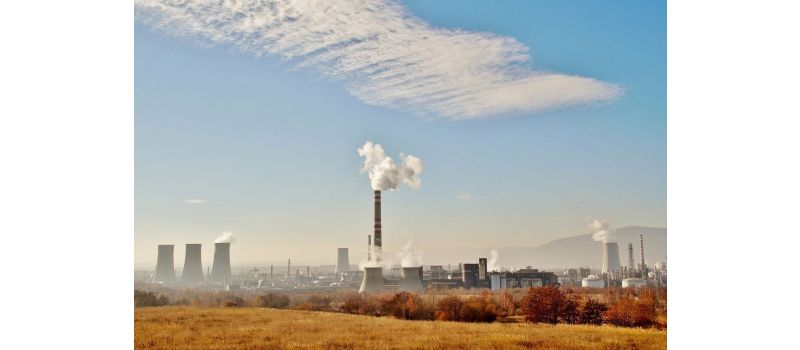Chemical spillages can occur in any environment where hazardous materials are stored, transported, or used. Whether in a warehouse, laboratory, factory, or manufacturing facility, understanding what constitutes a chemical spillage and how to control it effectively is crucial for ensuring safety and compliance with regulations.
At Kingfisher Direct, we bring our extensive expertise to the table, specialising in providing spill control equipment and knowledge to manage chemical spillages efficiently. In this guide, we’ll outline everything you need to know about identifying, controlling, and preventing chemical spillages to protect your workforce, operations, and the environment.
What is a Chemical Spillage?
A chemical spillage is the accidental release of hazardous substances that can pose risks to people, property, or the environment. These substances can range from industrial chemicals to cleaning agents and even fuels.
The risks associated with a chemical spillage depend on several factors, including the type of chemical, the volume spilt, and the location of the incident. Potential dangers include:
- Health Hazards: Exposure to toxic fumes, burns, or respiratory problems.
- Environmental Impact: Contamination of soil, water, or air.
- Operational Disruptions: Downtime caused by cleanup efforts or infrastructure damage.
Knowing how to respond swiftly and effectively to chemical spillage is essential to minimising these risks.
How to Control a Chemical Spillage
Controlling a chemical spillage requires a structured response plan prioritising safety and containment. Here’s how you can manage a spillage effectively:
1. Assess the Situation
The first step is to evaluate the severity of the spillage. Ask yourself:
- What type of chemical is involved?
- How much has been spilled?
- Are there any immediate dangers to people, equipment, or the environment?
Always refer to the chemical’s Safety Data Sheet (SDS) for guidance on handling and risks. The SDS provides detailed information about the properties of a chemical, its potential hazards, and how to work safely with it. It's a crucial tool in assessing the severity of a spillage and planning the appropriate response.
2. Evacuate and Isolate the Area
Ensure all non-essential personnel leave the area to reduce exposure risks. Use barriers or signs to cordon off the affected zone and prevent further contamination.
3. Use Personal Protective Equipment (PPE)
Equip responders with appropriate PPE, such as gloves, goggles, respirators, or HazMat suits, depending on the nature of the chemical. Only attempt to handle a spillage with the correct protective gear.
4. Contain the Spill
Prevent the chemical from spreading by using chemical spill control products like:
- Spill Kits: A pre-packed chemical spill kit contains absorbent pads, socks, waste bags and neutralisers for specific types of chemicals.
- Absorbent Materials: Spill absorbents such as granules or pads to soak up liquid spills.
- Barriers and Booms: Spill barriers effectively contain spills on surfaces or water.
5. Clean Up and Dispose Safely
Once the spillage is contained, we recommend following these steps:
- Neutralise hazardous chemicals using appropriate neutralisers. For instance, if the spill involves an acid, use an acid neutraliser. If it's an alkali, use an alkali neutraliser. This step is vital to ensure the chemical is fully neutralised and safe for disposal.
- Remove contaminated materials and equipment, sealing them in designated hazardous waste bags found in spill kits.
- Dispose of all waste in compliance with local environmental regulations.
6. Report and Review
After managing the spillage, you should document the incident thoroughly, including the cause, response measures, and outcomes. Use this information to review and improve your spillage response plan in the event of future chemical spillage.
Preventing Chemical Spillages
The best way to control chemical spillages is to prevent them from occurring in the first place. Here’s how to reduce the risk:
- Regular Training: Ensure all staff are trained in handling hazardous materials and responding to spills.
- Correct Storage: Store chemicals in labelled, sealed containers within secure areas, such as CoSHH cupboards.
- Routine Inspections: Regularly check storage areas and equipment for leaks or damage.
- Spill Preparedness: Ensure your workplace is readily equipped with spillage kits, spill containment barriers, and PPE to respond to emergencies safely.
Why Managing Chemical Spillages is Critical
Failing to control chemical spillages can lead to severe consequences, including legal penalties, health risks, reputational damage, and even site closure. Proper spill management demonstrates your commitment to safety, environmental protection, and regulatory compliance.
At Kingfisher Direct, we offer a wide range of spill management solutions to ensure your business is prepared for any eventuality. If you have any questions or need tailored advice, don’t hesitate to contact our team.
For more expert advice and resources, check out the Kingfisher Direct Blog for workplace safety and compliance tips. Together, we can create a safer environment for everyone.





